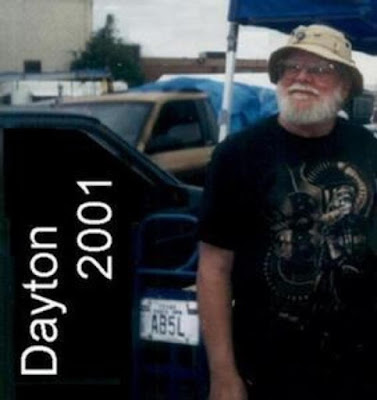Podcasting since 2005! Listen to Latest SolderSmoke
Saturday, July 24, 2021
Thursday, July 22, 2021
The Unicorn! A 75 LSB /20 USB Receiver (That Can't Work)
Wednesday, July 21, 2021
Ganymede and Jupiter as seen by Juno
Tuesday, July 20, 2021
Mythbuster Videos 8 and 9 -- The Old Military Radio Net plus "Zero Beat and The Vertical Skirts"
Monday, July 19, 2021
Michael Newton Hopkins, AB5L, Author of the FMLA series
Sunday, July 18, 2021
Alan Wolke W2AEW's Great Video on Using NanoVNA to Measure Amplifier Input Impedance and Gain
Saturday, July 17, 2021
Mythbuster Video #7: Bandswitch, Reverse Polarity Protection, CW with Clarifier Offset
I have the speaker mounted on the front of the board. I kind of like it like that. I now have a bandswitch, and reverse polarity protection (no more living dangerously for me). That Yaesu VFO clarifier circuit might prove useful should I decide to give this rig CW capability. I once again find myself thinking that I might never put this in a metal box. Frank Jones had the right idea.
Friday, July 16, 2021
Mythbuster Video #6 -- On to 20 Meters (But With Bandpass Filter Woes). Please help solve the mystery!
Thursday, July 15, 2021
Wednesday, July 14, 2021
Mythbuster Video #4 -- First Signals, 75 meter Bandpass Filter, Yaesu VFO output
Tuesday, July 13, 2021
Mythbuster Video #3 -- Using the VFO from a Yaesu FT-101
Monday, July 12, 2021
Mythbuster Video #2 -- 10 Pole Crystal Filter
Sunday, July 11, 2021
A Video Series on the Mythbuster 75/20 Rig -- Video #1
Friday, July 9, 2021
The Woz on Homebrewing and The Right to Repair
Thursday, July 8, 2021
A Great Line from the FMLA Articles
The narrator was in CW contact on 6 meters with a guy who turns out to be... Frank Jones.
Sunday, July 4, 2021
Romanian Mighty Mite and Ciprian's Knack Story
Saturday, July 3, 2021
M0NTV's Latest Breadbox Rig -- The Radio Gods Have Spoken (TRGHS)!
Thursday, July 1, 2021
Summer Reading for Homebrewers: Frank Jones and the FMLA by Michael Hopkins AB5L (SK)
I read these stories when they were first coming out and I really liked them. Here are all the FMLA episodes. Don't try to read them all in one sitting. Spread them out. Savor them. Think about the message that Frank was sending us.
All of the FMLA episodes: https://tomfhome.files.wordpress.com/2019/12/frank_and_the_fmla.pdf
--------------------------------------
Related articles, books and links:
Frank's obit: https://www.pressdemocrat.com/article/news/frank-jones/
Frank's book "5 Meter Telephony": https://w5jgv.com/downloads/5-Meter%20Radiotelephony%20by%20Frank%20Jones.pdf
Frank's 1937 Antenna Handbook: http://rfcec.com/RFCEC/Section-3%20-%20Fundamentals%20of%20RF%20Communication-Electronics/23%20-%20RADIO%20ENGINEERING%20DATA/1937%20-%20Jones%20Antenna%20Handbook%20(By%20Frank%20C.%20Jones).pdf
About the author, Michael Hopkins AB5L: https://www.rantechnology.com/index.cfm?key=view_resource&TransKey=615604E8-9DAA-40A3-9E48-4160806D893D&CategoryID=8E884CE4-9CED-4957-872B-5EBDB058D540&Small=1


































